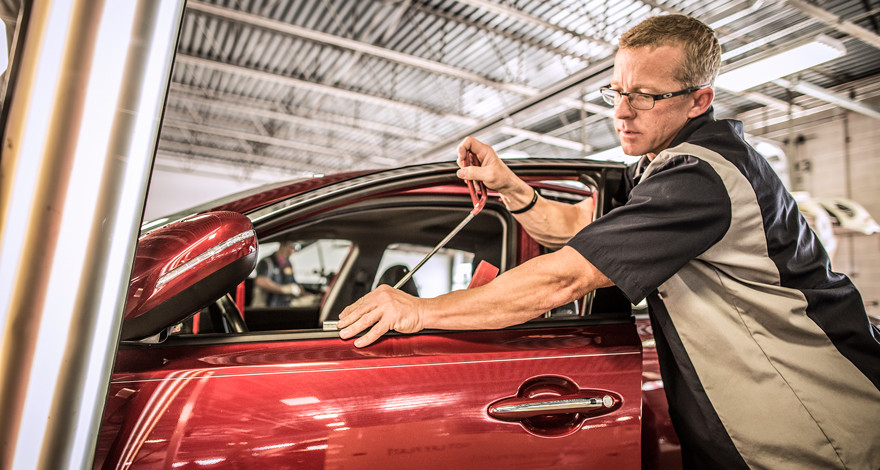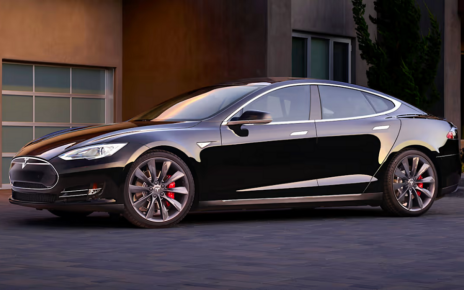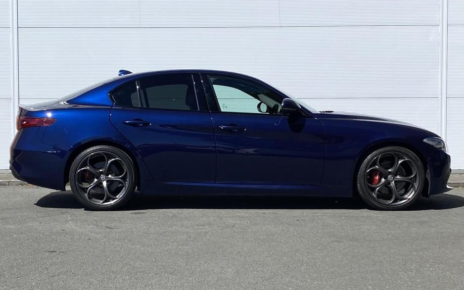Hailstorms can wreak havoc on vehicles, leaving them peppered with unsightly dents and dings. For vehicle owners, restoring their ride to its former glory is paramount. This is where Paintless Dent Repair (PDR) emerges as the knight in shining armor. Tailored to fix minor bodywork imperfections, especially those caused by hail, PDR boasts a myriad of advantages over traditional dent repair methods. Let’s delve into why PDR stands tall as the best method to address hail damage.
- Original Paint Preservation: Traditional dent repair methods often involve sanding, filling, and then repainting the damaged region. This can lead to slight mismatches in paint color and texture. PDR, on the other hand, maintains the vehicle’s original paint job by meticulously massaging the dents from inside the panel. This not only retains the authentic appearance but also upholds the vehicle’s resale value.
- Cost-Effectiveness: One of the most enticing benefits of PDR is its cost-effectiveness. The traditional repair route involves materials and processes that can pile up the bill: fillers, primers, paints, and extensive labor. PDR is streamlined, focusing only on reforming the metal, leading to material savings and, in many cases, reduced labor costs.
- Swift Repairs: Time is of the essence, and having a car stuck in a repair shop can disrupt daily routines. Traditional methods, given their complexity, can sideline your vehicle for extended periods. PDR, being less invasive, often promises a quicker turnaround, frequently delivering results within a day, especially for localized damage.
- Environmental Consideration: As global environmental consciousness rises, the demand for sustainable practices in every industry is paramount. PDR shines in this arena by sidestepping the need for chemicals, fillers, or fresh paint. This reduction in harmful solvents and materials used in traditional methods makes PDR a green choice, resonating with eco-aware consumers.
- Value Retention: When evaluating a car’s worth, dealers and potential buyers often scrutinize for signs of repairs. The untouched original paint is a hallmark of value. PDR ensures that the vehicle retains its factory finish, bolstering its resale value. Vehicles that showcase their original paint generally command better prices in the market.
- Expertise at Play: PDR isn’t just a technique; it’s an art. The skill required to deftly massage out dents without affecting the paint or the panel’s integrity demands extensive training. When you opt for PDR, you’re placing your trust in highly skilled technicians whose precision ensures the dents vanish, leaving no trace behind.
- Versatility and Comprehensive Care: Beyond hail-induced dents, PDR is adept at handling other minor dents and dings, whether from a stray shopping cart or a misjudged parking attempt. This all-round capability ensures that vehicle owners can address multiple issues in one go, providing comprehensive care for their prized possession.
- Incorporation of Advanced Technology: The PDR process has evolved over the years, now integrating state-of-the-art tools and technologies. The use of LED lighting and reflection boards, for instance, offers technicians an enhanced view, ensuring every minute dent is meticulously addressed. Such technological assimilation underscores the precision and effectiveness of PDR.
In summary, Paintless Dent Repair represents the confluence of efficiency, cost-effectiveness, and quality. Especially when combatting the aftermath of a hailstorm, PDR emerges as the gold standard in vehicle repair. It upholds the car’s aesthetic integrity and market value while ensuring repairs are swift and environmentally sound. For those seeking to erase the scars left by hail on their vehicles, PDR is not just an option—it’s the best choice.





